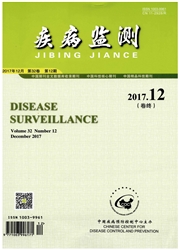

 中文摘要:
中文摘要:
目的调查河南、山东部分地区家猫汉赛巴尔通体血清抗体及菌血症情况。方法间接酶联免疫吸附试验(ELISA)方法调查314份家猫血清抗体情况,通过聚合酶链反应(PCR)和测序对血培养产物进行病原学鉴定。结果用ELISA法共检测314份标本,总的抗体阳性率为29.6%,〈6月龄的幼猫阳性率较低(19.3%),〉2岁的老猫抗体阳性率最高(37.5%),雌性和雄性之间没有明显差别,血培养共培养出42份可疑阳性,PCR及序列分析证实为汉赛巴尔通体。结论河南、山东部分地区家猫均存在汉赛巴尔通体感染情况,汉赛巴尔通体是家猫感染的主要菌种。
 英文摘要:
英文摘要:
Objective The present study was conducted to investigate the bartonella henselae IgG antibody and becteremia in domestic cats in Henan and Shandong provinces. Methods Indirect enzymelinked immunosorbent assay (ELISA) was used to detect serum IgG antibody in 314 domestic cats, with blood from the animals cultured for the identification of pathogens by polymerase chain reaction(PCR) and sequencing. Results It was found that the total positive rate of serum antibody was 29.6%, with a lower positive rate in young cats under 6 months(19.3%)and a higher one in old cats over 2 years(37.5%). There was no difference between both sexes in terms of the positive rate. There were 42 blood samples whose cultures were suspected to be positive for the antibody, which were confirmed to be with bartonella henselae by PCR and sequencing. Conclusion The domestic cats in the regions of Henan and Shandong are infected by bartonella henselae, which was the main bacteria causing infection of domestic cats.
 同期刊论文项目
同期刊论文项目
 同项目期刊论文
同项目期刊论文
 期刊信息
期刊信息
